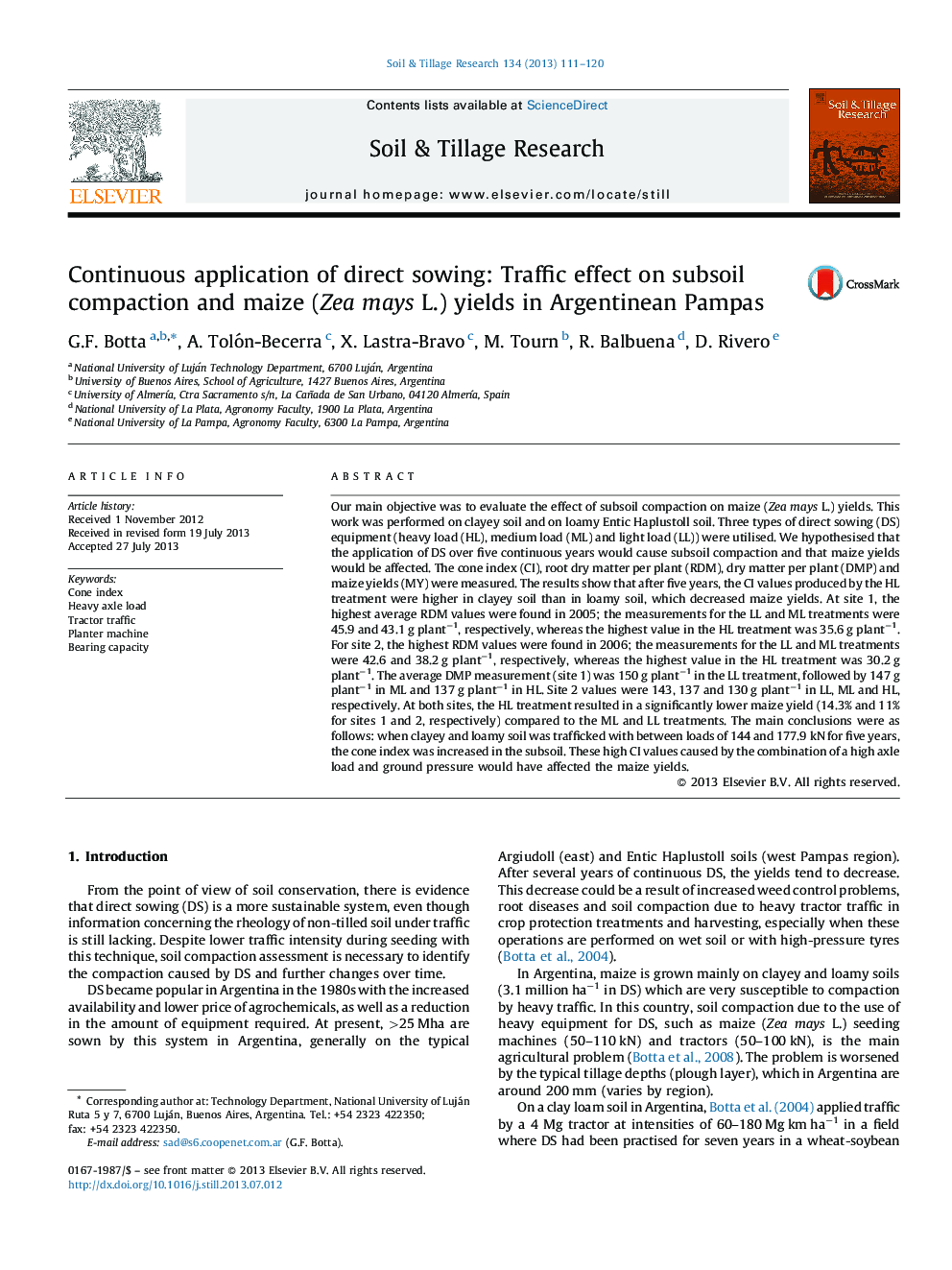| کد مقاله | کد نشریه | سال انتشار | مقاله انگلیسی | نسخه تمام متن |
|---|---|---|---|---|
| 305806 | 513052 | 2013 | 10 صفحه PDF | دانلود رایگان |

• Subsoil compaction occurs after five years of application of direct sowing systems.
• We found that maize yields varied in response to subsoil compaction.
• One pass a tractor and planter with weight above 144 kN produced subsoil compaction.
• Cone index measurements showed that subsoil compaction persisted for more than 4 year.
• When the axle load increase on soils with high bearing capacity crop yields decrease.
Our main objective was to evaluate the effect of subsoil compaction on maize (Zea mays L.) yields. This work was performed on clayey soil and on loamy Entic Haplustoll soil. Three types of direct sowing (DS) equipment (heavy load (HL), medium load (ML) and light load (LL)) were utilised. We hypothesised that the application of DS over five continuous years would cause subsoil compaction and that maize yields would be affected. The cone index (CI), root dry matter per plant (RDM), dry matter per plant (DMP) and maize yields (MY) were measured. The results show that after five years, the CI values produced by the HL treatment were higher in clayey soil than in loamy soil, which decreased maize yields. At site 1, the highest average RDM values were found in 2005; the measurements for the LL and ML treatments were 45.9 and 43.1 g plant−1, respectively, whereas the highest value in the HL treatment was 35.6 g plant−1. For site 2, the highest RDM values were found in 2006; the measurements for the LL and ML treatments were 42.6 and 38.2 g plant−1, respectively, whereas the highest value in the HL treatment was 30.2 g plant−1. The average DMP measurement (site 1) was 150 g plant−1 in the LL treatment, followed by 147 g plant−1 in ML and 137 g plant−1 in HL. Site 2 values were 143, 137 and 130 g plant−1 in LL, ML and HL, respectively. At both sites, the HL treatment resulted in a significantly lower maize yield (14.3% and 11% for sites 1 and 2, respectively) compared to the ML and LL treatments. The main conclusions were as follows: when clayey and loamy soil was trafficked with between loads of 144 and 177.9 kN for five years, the cone index was increased in the subsoil. These high CI values caused by the combination of a high axle load and ground pressure would have affected the maize yields.
Journal: Soil and Tillage Research - Volume 134, November 2013, Pages 111–120